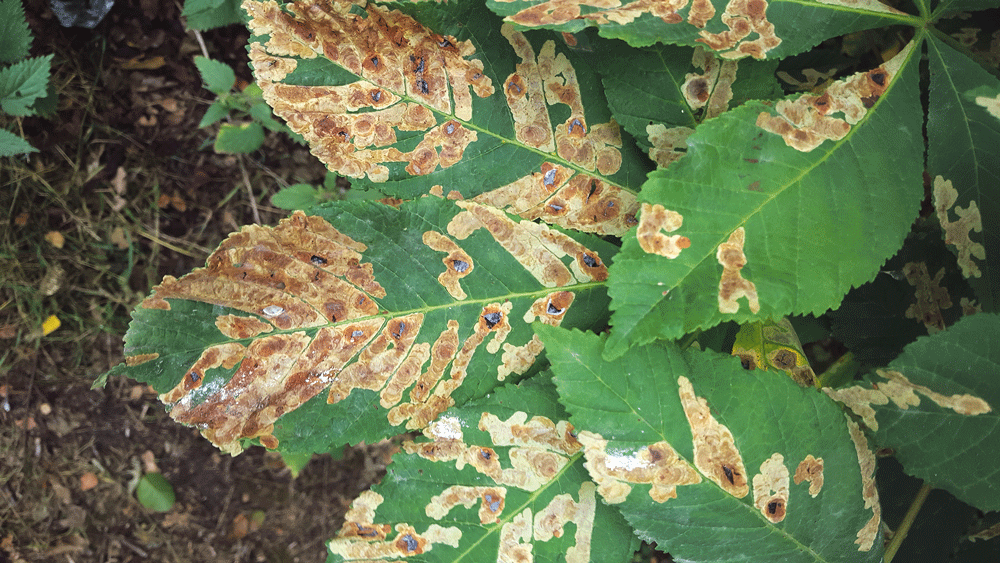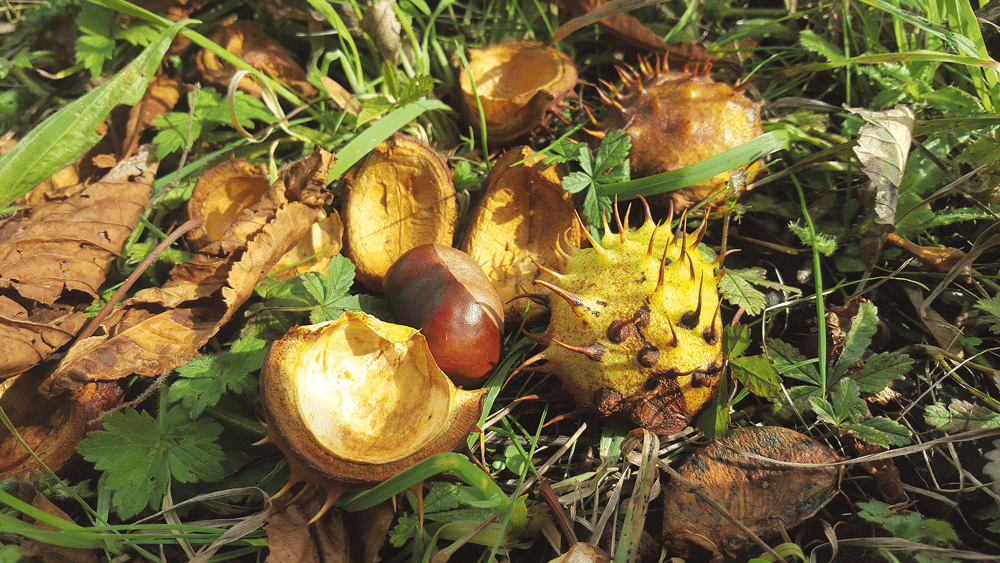

Nature on our doorsteps: Brown Horse Chestnut leaves
Rosaleen Dwyer is the County Heritage Officer at South Dublin County Council – every week she gives us an insight into the natural heritage around us and the beautiful biodiversity of the plants and creatures.
While the leaves of many of our trees and hedgerows are turning to brown and gold as autumn progresses, the leaves of one particular tree may be brown for a very different reason.
The leaves of the Horse Chestnut tree often begin to look brown as early as late summer, and the cause of this is a small species of micro moth which grows no more than 5 mm long.
The moth’s front wings are a metallic chestnut brown colour, with silvery white stripes that are edged in black.
Its hind wings are dark grey with long fringes.
Due to the action of its larvae, it is one of the group of moths that is often referred to as being leaf miners.
The adult lays her eggs from May to August on the leaves of Horse Chestnut.
When the tiny larvae hatch, they burrow into the leaves and begin to feed on the very narrow layer of plant tissue that occurs between the top and bottom surfaces of the leaf.
As the larvae feed, they excavate or ‘mine’ their way through the leaf, leaving a tunnel of dead tissue behind which turns brown and withered.

Leaf miners can reduce the Horse Chestnut’s production of conkers
In heavy infestations, leaves can be completely covered in these scars of dead tissue.
While the impact of the Horse Chestnut leaf miner can look unattractive and can result in early leaf-drop or smaller conkers, trees are unlikely to be killed initially.
Eventually however, after years of infestation, trees can become weakened.
The Horse Chestnut leaf miner is a non-native species that was first recorded as a pest in Dublin in 2013.
As the moth has no natural predators in this country to control it, it has become widespread across Ireland as an invasive species.
Scientists are unsure as to the origin of this micro moth.
It has spread all over Europe from its first recorded occurrence in the 1980s in the Balkans, and infestations have affected Horse Chestnuts wherever these graceful trees occur.
Studies continue to try and find a solution to the issue.

